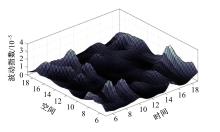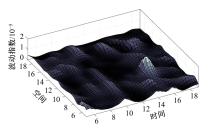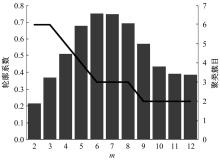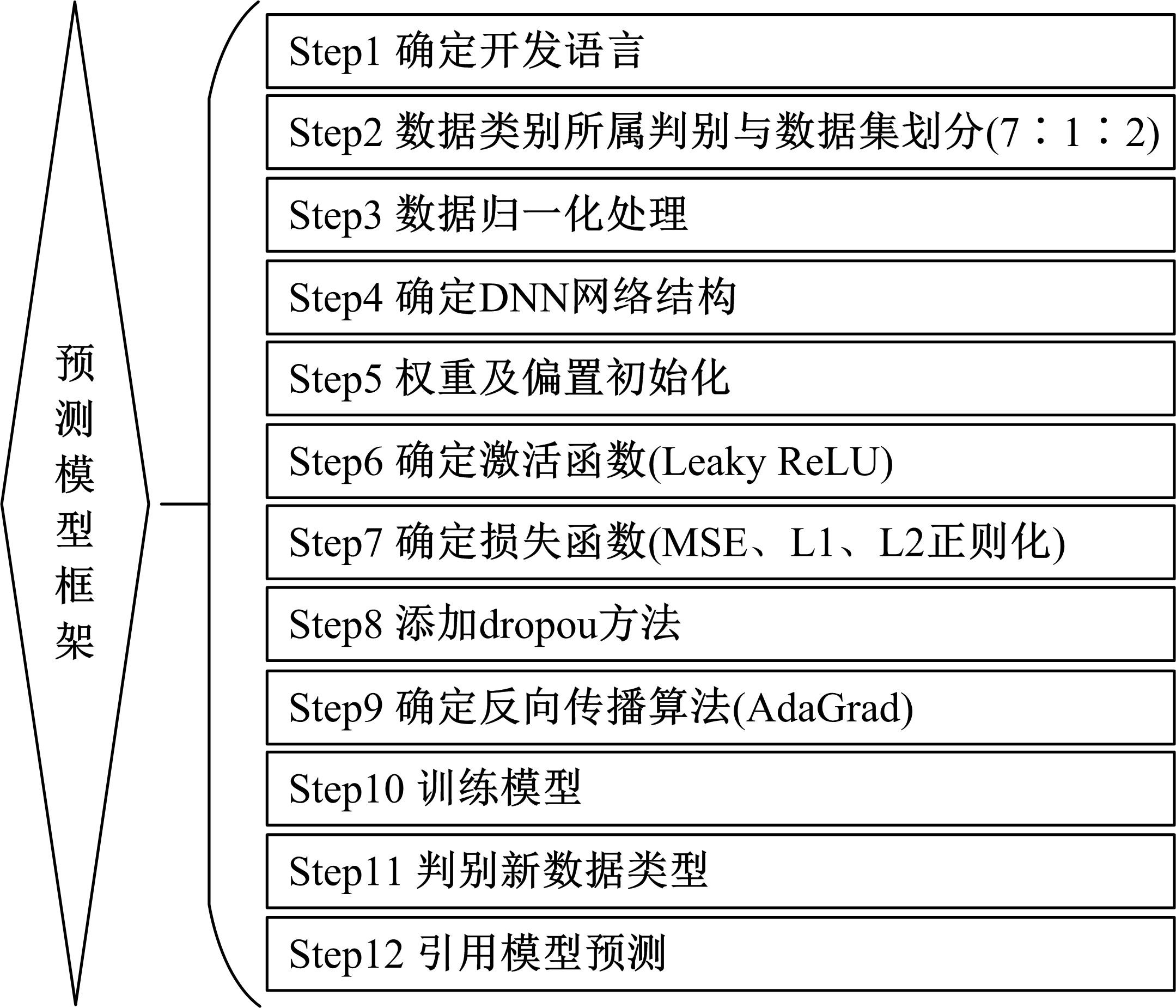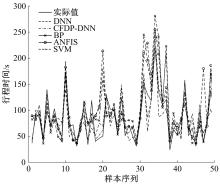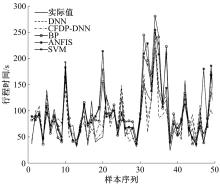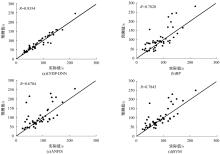Journal of Jilin University(Engineering and Technology Edition) ›› 2022, Vol. 52 ›› Issue (8): 1792-1799.doi: 10.13229/j.cnki.jdxbgxb20210248
Fluctuation characteristics and prediction method of bus travel time between stations
Xian-min SONG1( ),Shu-tian YANG1,Ming-xin LIU2(
),Shu-tian YANG1,Ming-xin LIU2( ),Zhi-hui LI1
),Zhi-hui LI1
- 1.College of Transportation,Jilin University,Changchun 130022,China
2.The Architectural Design & Research Institute of Zhejiang University Co. ,Ltd. ,Hangzhou 310028,China
CLC Number:
- U491
| 1 | Shalaby A, Farhan A. Prediction model of bus arrival and departure times using AVL and APC data[J]. Journal of Public Transportation, 2004, 7(1): 41-61. |
| 2 | 童小龙, 卢冬生, 张腾, 等. 基于时间序列法的公交车站间行程时间预测模型研究——以苏州1路公交为例[J]. 交通运输工程与信息学报, 2017, 15(4): 114-119, 126. |
| Tong Xiao-long, Lu Dong-sheng, Zhang Teng, et al. Research on bus inter-site travel time prediction model: a case study based on suzhou No.1 bus route[J].Journal of Transportation Engineering and Information, 2017, 15(4): 114-119, 126. | |
| 3 | 苗旭, 王忠宇, 吴兵, 等. 考虑前序路段状态的公交到站时间双层BPNN预测模型[J]. 交通运输系统工程与信息, 2020, 20(2): 127-133. |
| Miao Xu, Wang Zhong-yu, Wu Bing, et al. Bi-layer BPNN prediction model for bus arrival time considering preceding segment state[J]. Journal of Transportation Systems Engineering and Information Technology, 2020, 20(2): 127-133. | |
| 4 | Cong B, Peng Z R, Lu Q C, et al. Dynamic bus travel time prediction models on road with multiple bus routes[J]. Computational Intelligence & Neuroscience, 2015, 2015: 432389. |
| 5 | Farid Y Z, Christofa E, Paget-Seekins L. Estimation of short-term bus travel time by using low-resolution automated vehicle location data[J].Transportation Research Record Journal of the Transportation Research Board, 2016, 2539(1): 113-118. |
| 6 | 梁士栋, 赵淑芝, 马明辉, 等. 路段直线式公交站点对公交车延误的影响[J]. 吉林大学学报: 工学版, 2016, 46(6): 1807-1817. |
| Liang Shi-dong, Zhao Shu-zhi, Ma Ming-hui, et al. Impacts of linear bus stop on bus delays[J]. Journal of Jilin University(Engineering and Technology Edition), 2016, 46(6): 1807-1817. | |
| 7 | 邝先验, 罗会超, 钟蕊, 等. 基于天牛须小波神经网络的公交到站时间预测[J]. 吉林大学学报: 工学版, 2022, 52(1): 110-117. |
| Kuang Xian-yan, Luo Hui-chao, Zhong Rui, et al. Bus arrival time prediction based on wavelet neural network optimized by beetle antennae search[J]. Journal of Jilin University(Engineering and Technology Edition), 2022, 52(1): 110-117. | |
| 8 | 杨世军, 裴玉龙, 潘恒彦, 等. 城市公交车辆驻站时间特征分析及预测[J]. 吉林大学学报: 工学版, 2021, 51(6): 2031-2039. |
| Yang Shi-jun, Pei Yu-long, Pan Heng-yan, et al. Characteristics analysising and prediction of dwelling time of urban bus[J]. Journal of Jilin University(Engineering and Technology Edition), 2021, 51(6): 2031-2039. | |
| 9 | Sharmila R B, Velaga N, Choudhary P. Bus arrival time prediction and measure of uncertainties using survival models[J]. IET Intelligent Transport Systems, 2020, 14(8): 900-907. |
| 10 | Rodriguez A, Laio A. Clustering by fast search and find of density peaks[J]. Science, 2014, 344(6191):1492-1496. |
| 11 | Hinton G E, Srivastava N, Krizhevsky A, et al. Improving neural networks by preventing co-adaptation of feature detectors[J]. Computer Science, 2012, 3(4): 212-223. |
| 12 | Hadgu A T, Nigam A, Diaz-Aviles E. Large-scale learning with AdaGrad on spark[C]∥IEEE International Conference on Big Data, Santa Clara, USA, 2015: 2828-2830. |
| [1] | Wen-jing WU,Yong-bin ZHAN,Li-li YANG,Run-chao CHEN. Coordinated control method of variable speed limit in on⁃ramp area considering safety distance [J]. Journal of Jilin University(Engineering and Technology Edition), 2022, 52(6): 1315-1323. |
| [2] | Zhi ZHENG,Bo GENG,Fu-min WANG,Jun-hong DONG,Si-si WEI. Improvement of protective ability for existing low⁃grade concrete guardrail [J]. Journal of Jilin University(Engineering and Technology Edition), 2022, 52(6): 1362-1374. |
| [3] | Hong-fei JIA,Zi-han SHAO,Li-li YANG. Ride⁃sharing matching model and algorithm of online car⁃hailing under condition of uncertain destination [J]. Journal of Jilin University(Engineering and Technology Edition), 2022, 52(3): 564-571. |
| [4] | Xing-hua LI,Fei-yu FENG,Cheng CHENG,Wei WANG,Peng-cheng TANG. Choice preference analysis and modeling of ridesplitting service [J]. Journal of Jilin University(Engineering and Technology Edition), 2022, 52(3): 578-584. |
| [5] | Tian-jun FENG,Xue-lu SUN,Jia-sheng HUANG,Xiu-juan TIAN,Xian-min SONG. Two-phase signal intersection delay based on three crossing modes [J]. Journal of Jilin University(Engineering and Technology Edition), 2022, 52(3): 550-556. |
| [6] | Xian-tong LI,Wei QUAN,Hua WANG,Peng-cheng SUN,Peng-jin AN,Yong-xing MAN. Route travel time prediction on deep learning model through spatiotemporal features [J]. Journal of Jilin University(Engineering and Technology Edition), 2022, 52(3): 557-563. |
| [7] | Yan-feng JIA,Da-yi QU,Lu LIN,Rong-han YAO,Xiao-long MA. Coordinated speed control of connected mixed traffic flow based on trajectory [J]. Journal of Jilin University(Engineering and Technology Edition), 2021, 51(6): 2051-2060. |
| [8] | Chang-fu ZONG,Long WEN,Lei HE. Object detection based on Euclidean clustering algorithm with 3D laser scanner [J]. Journal of Jilin University(Engineering and Technology Edition), 2020, 50(1): 107-113. |
| [9] | Liang JIANG,Yi HE. Risky driving behavior and influencing factors analysis for electric two⁃wheeler [J]. Journal of Jilin University(Engineering and Technology Edition), 2019, 49(4): 1107-1113. |
| [10] | Xiao⁃qin LUO,Dian⁃hai WANG,Sheng JIN. Traffic signal actuated control at isolated intersections for heterogeneous traffic [J]. Journal of Jilin University(Engineering and Technology Edition), 2019, 49(3): 695-704. |
| [11] | Zhi⁃hui LI,Tao ZHONG,Yong⁃hua ZHAO,Yong⁃li HU,Hai⁃tao LI,Jing⁃wei ZHAO. Pedestrian tracking algorithm for autonomous driving [J]. Journal of Jilin University(Engineering and Technology Edition), 2019, 49(3): 680-687. |
| [12] | QU Da-yi,YANG Jing-ru,BING Qi-chun,WANG Wu-lin,ZHOU Jing-chun. Arterial traffic offset optimization based on queue characteristics at adjacent intersections [J]. Journal of Jilin University(Engineering and Technology Edition), 2018, 48(6): 1685-1693. |
| [13] | LI Zhi-hui, HU Yong-li, ZHAO Yong-hua, MA Jia-lei, LI Hai-tao, ZHONG Tao, YANG Shao-hui. Locating moving pedestrian from running vehicle [J]. 吉林大学学报(工学版), 2018, 48(3): 694-703. |
| [14] | SUN Zong-yuan, FANG Shou-en. Hierarchical clustering algorithm of moving vehicle trajectories in entrances and exits freeway [J]. 吉林大学学报(工学版), 2017, 47(6): 1696-1702. |
| [15] | ZHANG Zhe, JIA Li-min, QIN Yong, YUN Ting. Equalization-based feedback control model of pedestrian counter flow [J]. 吉林大学学报(工学版), 2017, 47(6): 1728-1737. |
|
||
